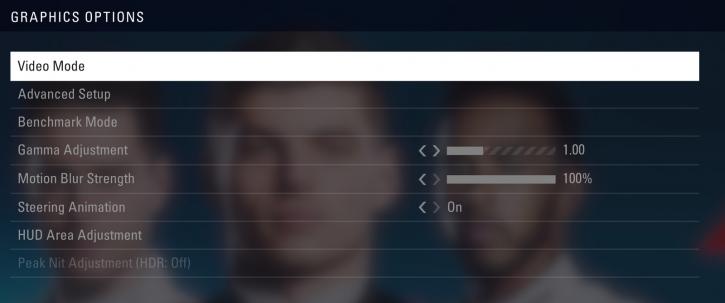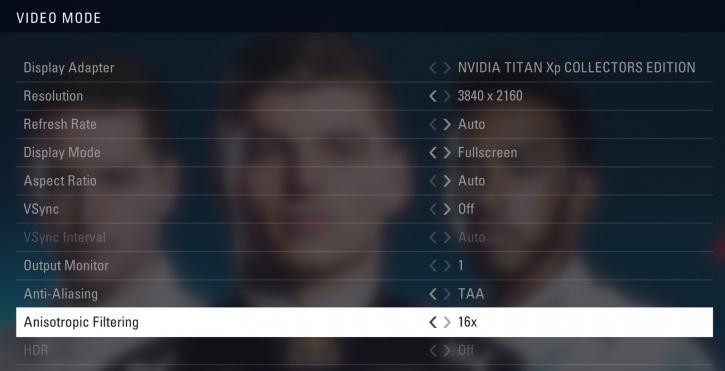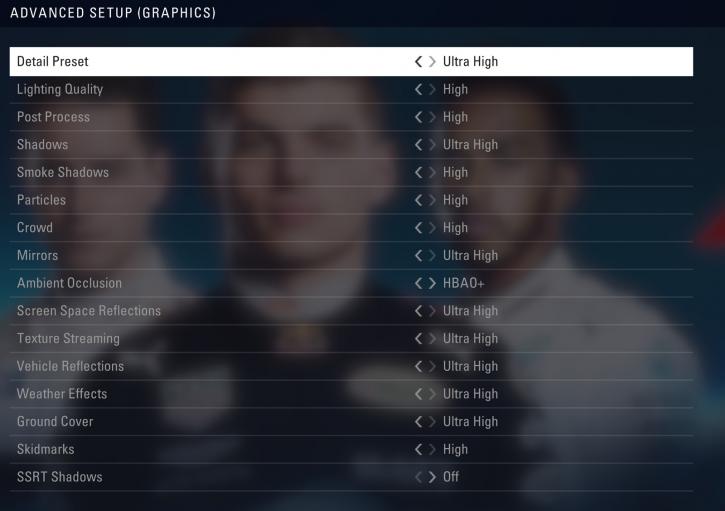Image quality settings and benchmark system
Image quality settings and benchmark system
For this game, we use a run with Ultra image quality settings, the highest possible quality mode. We will test a good number of cards in this D3D11 compatible title performance wise. Games typically should be able to run in the 40 FPS range combined with your monitor resolution. From there onwards you can enable/disable things if you need more performance or demand even better game rendering quality.
There's a lot of features you can configure, we recommend you to stick to high or Ultra High and leave it at that. Once you do fool around with settings we find it funny to see that to the right a preview of the settings shows, which shows the effect of changing the respective setting's value. We manually enable HBAO+ on both NVIDIA and AMD card as Nvidia reverts to HBAO+ automatically. Not listed in the above screenshot, but we also apply x16 AF manually. Truth be told, the in-game anti-aliasing modes are pretty crap really, you in-game option is TAA, which is a bit of a blurry software-based approach. We do enable it, but on a high-res screen you could do without AA fine and get some extra performance as well.
Graphics cards tested
In this review we'll test the following cards at the best PC experience, a maxed out quality mode (Ultra) with VSYNC OFF. The graphics cards used in this test:
- GeForce GTX 1050
- Geforce GTX 1050 Ti (4GB)
- GeForce GTX 1060 (6GB)
- GeForce GTX 1070
- GeForce GTX 1070 Ti
- GeForce GTX 1080
- GeForce GTX 1080 Ti
- GeForce GTX 980 Ti
- GeForce Titan X (Pascal)
- GeForce Titan Xp
- Radeon R9 Fury
- Radeon R9 Fury X
- Radeon R9 Nano
- Radeon RX 470 (8GB)
- Radeon RX 480 (8GB)
- Radeon RX 570 (8GB)
- Radeon RX 580 (8GB)
- Radeon RX Vega 56
- Radeon RX Vega 64
System Specifications & recommended drivers
Our test system is based on the eight-core Intel Core i7-5960X Extreme Edition with Haswell-E based setup on the X99 chipset platform. This setup is running tweaked at 4.20 GHz. Next, to that, we have energy saving functions disabled for this motherboard and processor (to ensure consistent benchmark results). We use Windows 10 all patched up. Each card runs on the same PC with the same operating system clone.
The drivers are:
- GeForce cards use the latest 398.98 WHQL driver (download drivers).
- Radeon graphics cards we used the latest AMD Radeon Crimson 18.8.1 Driver (download drivers).




